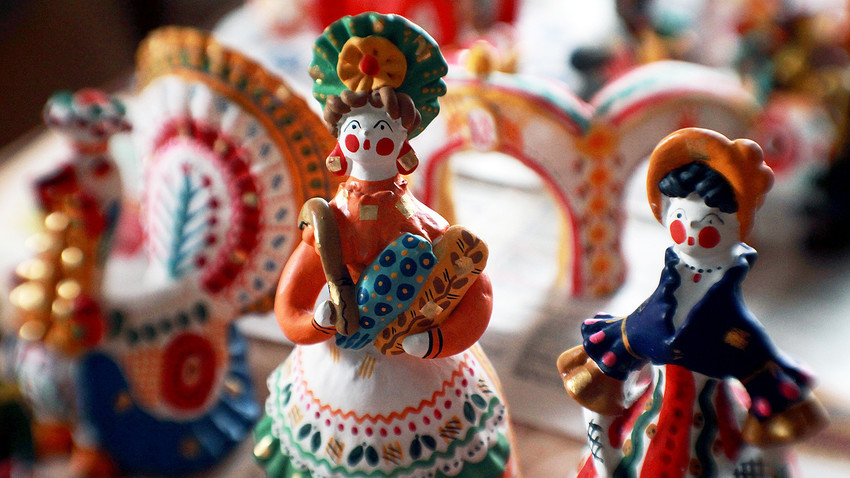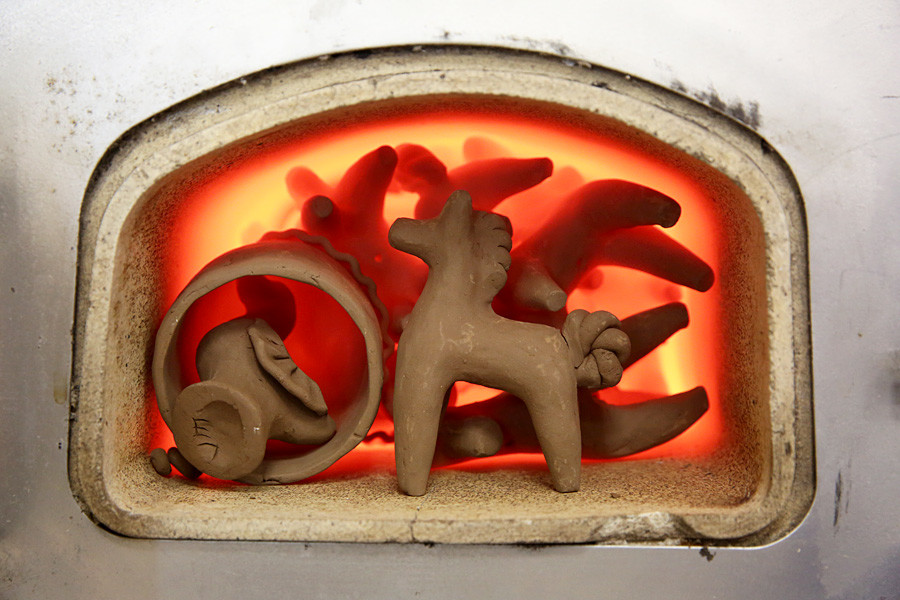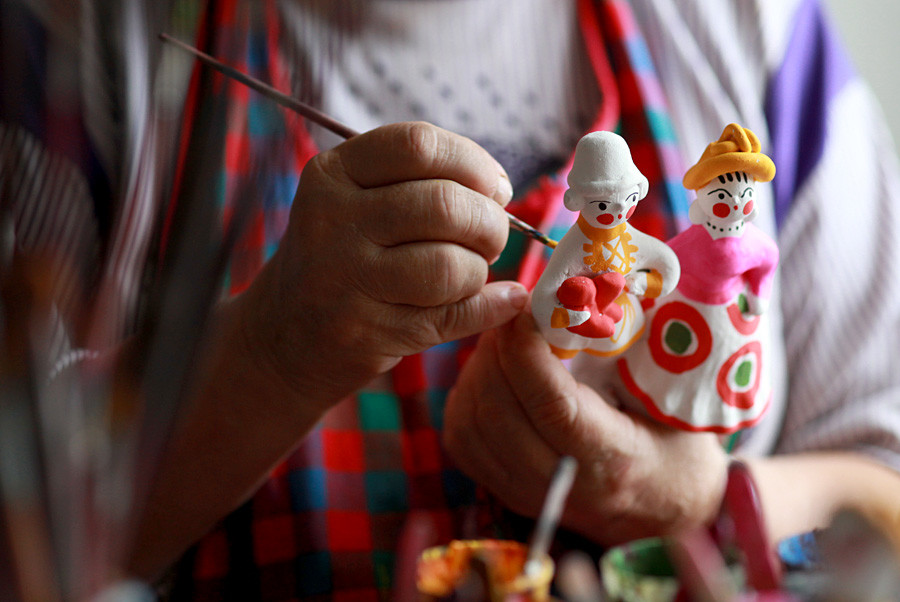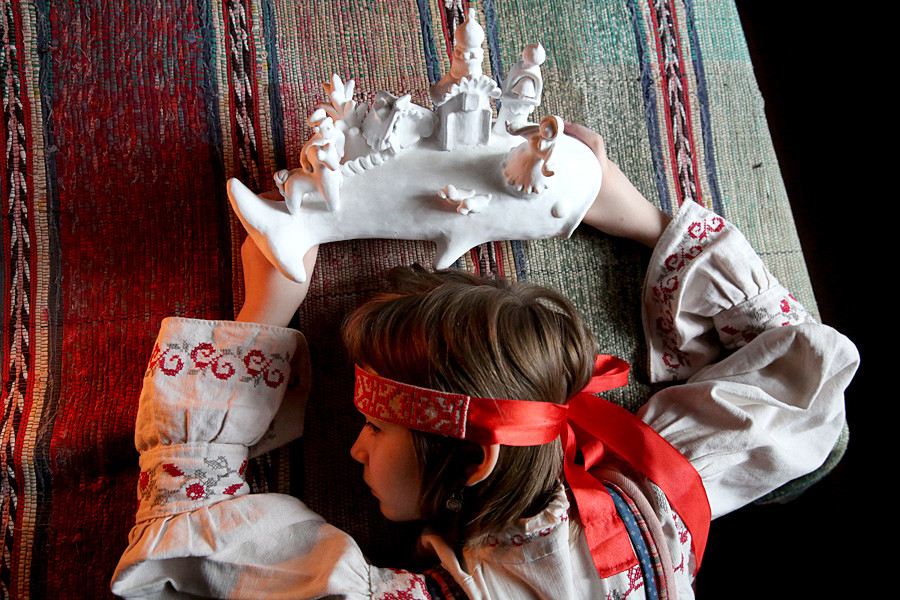
Dymkovo toys
Pavel Smertin/TASSThe
Dymka is truly a unique toy because no one replicates the other. Each has its own subject and ornamentation.
“Usually, the toy consists of several details. Red clay provides the possibility to ‘glue’ all the details together without external means. What’s necessary is an instrument that smooths the joint areas so that the seam is not visible,” said Oxana Romanova, an instructor of Dymka sculpting and painting at the Amphora Ceramics Academy.

The finished toy is left to dry for 5-7 days, and then it’s placed in an oven and fired at a temperature of 900 degrees Celsius. Afterwards, whitening is applied.
No one knows exactly when and who first thought of the white covering for the
“The peasants, seeing porcelain in their masters’ homes, adopted the white background, which was made from powdered chalk that was diluted in milk. The toy was dipped into the mixture and then allowed to dry. As it dried the milk soured, allowing the primer to adhere very well,” Romanova explained.

People were also very inventive in preparing the colors: using egg yolk,
Dymka toy masters were inspired by subjects from life. “They sculpted everything they saw around them: animals, scenes from peasant life, fishermen, women with the yoke, beautiful ladies and handsome gentlemen who they saw at fairs,” said Romanova
In Soviet times Dymka masters fancied topics related to scientific and space achievements; for example, a man and a woman in spacesuits standing under an apple tree like Adam and Eve

Funny and silly events from the lives of the masters themselves also made their way into the art form. Zoya Penkina, a hereditary Dymka master, was inspired by her first impressions of the Moscow subway, and created a composition featuring an excited woman who gets stuck in the
The Dymka toy in its traditional form could have gone extinct 100 years ago, but it was saved from oblivion by Anna

Later, the Kirov Artist Union created an Artistic Council to monitor the use of traditional canons in the manufacture of the Dymka. Toys not prepared according to tradition were received negatively and immediately destroyed with a hammer. This method prevented the appearance of a new branch of the craft.
At first, Dymka production was taught in families, and knowledge was passed down from mother to daughter. But by the 1960s the philosophy became less rigid and students were accepted from the outside. The future masters had to pass an exam on painting,
The largest collection of Dymka toys can be found at the Museum of the Dymka Toy, and at the Vyatka Vasnetsov Art Museum. It is possible to purchase Dymka toys through the official site.
If using any of Russia Beyond's content, partly or in full, always provide an active hyperlink to the original material.
Subscribe
to our newsletter!
Get the week's best stories straight to your inbox